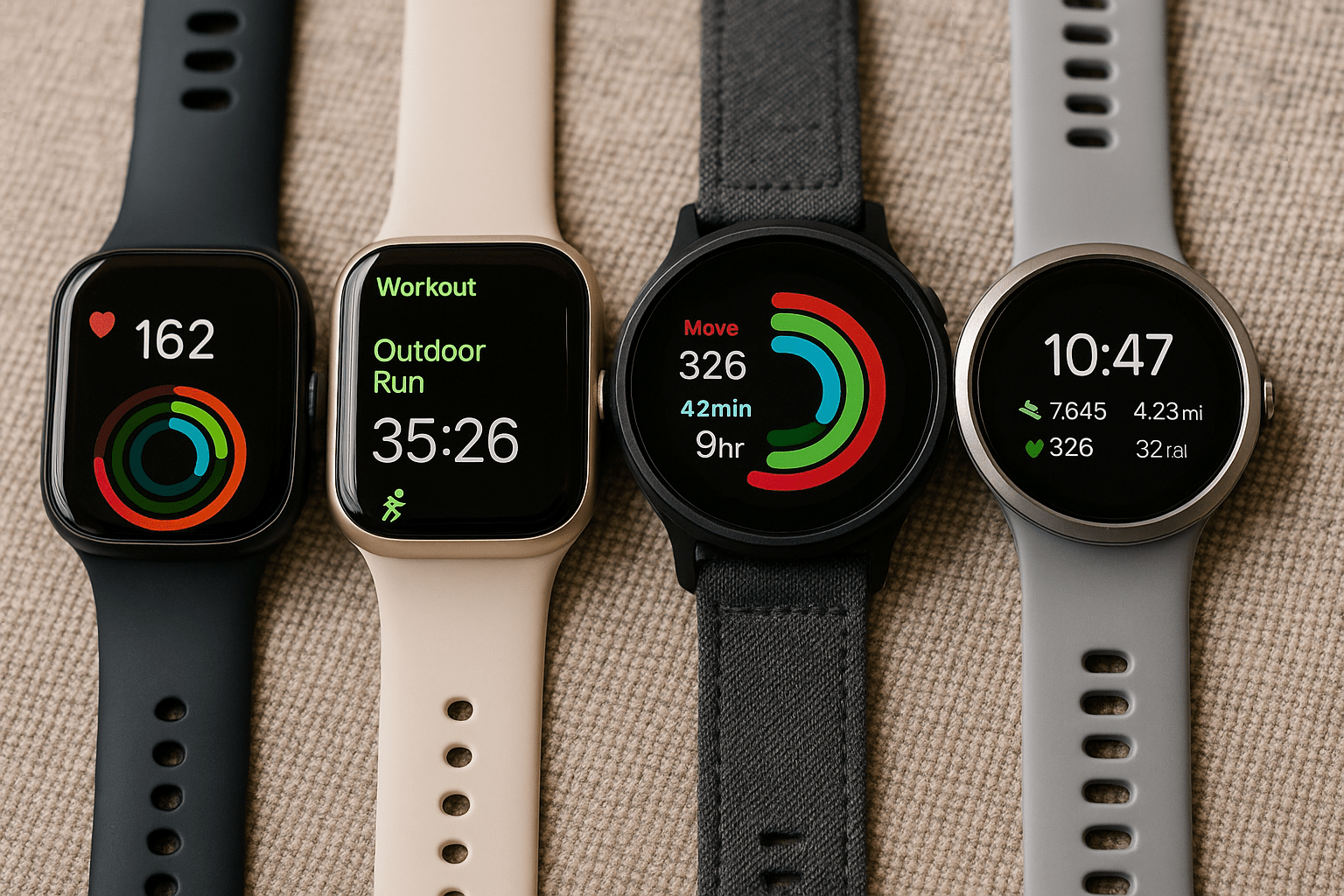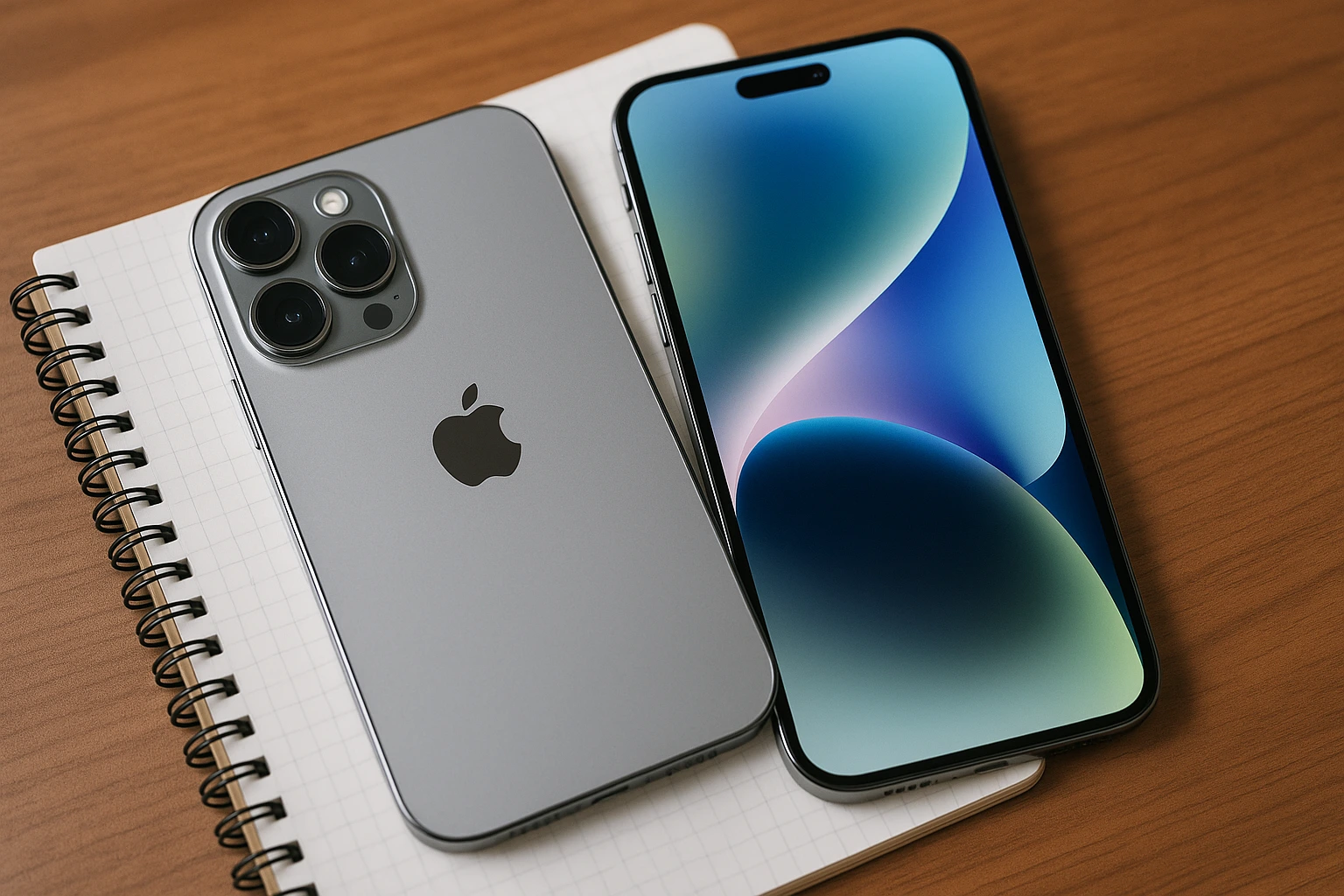Can a watch mend your health? A 2023 study published by the American College of Sports Medicine showed that those who regularly tracked their fitness maintained their exercise routine 45% more than those who did not, for the period of six months. Essentially, this means that a simple wristband could indeed be the game-changer in your health and wellness journey.
The wristwatch used to count steps, measure heart rate, analyze sleep, and even coach you through workouts has now evolved into a complete personal health companion. But with an enormous choice available in the market, how do you find one just right for you?
This guide cuts through the mess to explore why fitness watches matter, 2025’s top models, the decision-making process behind picking one, and what else is on the horizon for wearable health technology.
Why Fitness Watches Matter
The fitness watches have gone from fad to having a place in one’s toolbox for anyone pursuing an otherwise active, healthy lifestyle. Be it assisting an elite athlete or a simple human being needing extra accountability during daily walks, these gadgets tell you things that far surpass a restaurant membership.
Here’s Why Fitness Watches Are Worth the Hype:
- Real-Time Feedback: Track heart rate, calories, VO2 max, and more with on-the-go insights.
- Long-Term Motivation: Progress graphs, goal tracking, and reminders help maintain consistency.
- Sleep & Recovery Analysis: Features like sleep stage tracking and stress monitoring support holistic wellness.
- Customization: Personalized workouts, health recommendations, and app integrations adapt to your lifestyle.
Top Fitness Watch in 2025: Best Picks per Category
1. Best Overall: Garmin Forerunner 965
The new top-of-the-line Garmin model boasts professional features like dual-band GPS, HRV status, recovery time tracking, and multi-sport support, among many others. Athletes love its AMOLED screen, long battery life (23 days on standby), and detailed deep training analysis on Garmin Connect.
“From an accurate perspective of training readiness to top-notch durability, the Forerunner 965 is unmatched,” noted certified running coach Amy Reardon.
2. Best for Apple Users: Apple Watch Ultra 2
Designed with adventurers and fitness lovers in mind, Ultra 2 upgrades with dual-frequency GPS, skin temperature sensors, and a better battery (with power up to 36 hours). It is most suitable for runners, divers, and cyclists who want to have one device that covers their health, safety, and smart features.
3. Most Affordable: Amazfit Bip 5
Priced below $100, the Bip 5 offers features that include heart rate monitoring, SpO2, stress, and sleep tracking with a 10-day battery life! Great for a casual user or a beginner who wants core functionalities at minimal prices.
4. Best Lifestyle & Fitness: Fitbit Charge 6
Fitbit continues to have the upper hand in health tracking with ECG, sleep score, and daily read
4. Best for Lifestyle & Fitness: Fitbit Charge 6
Fitbit presents another great health tracking watch with features for ECG, sleep scoring, and daily readiness metrics. Now supporting Google Maps, YouTube Music controls, and tap-to-pay, the Charge 6 becomes a health-watch-lifestyle combo.
5. Best for Outdoor Sports: COROS Apex 2 Pro
The Apex 2 Pro is a beast for hiking, mountain biking, and endurance activities, with 40+ sports modes, a super rugged build, and 70+ hours of GPS battery life. Training load insights stack up well against Garmin, meaning it has started to rise in popularity among serious athletes.
How to Choose the Right Fitness Watch: A Practical Guide
Step 1: Define Your Goals
- Are you tracking daily steps and sleep?
- Do you need accurate GPS and VO2 max for marathon prep?
- Are you prioritizing stress management and recovery?
Your goals shape the features you’ll need.
Step 2: Decide Your Ecosystem
- iPhone users may benefit most from the Apple Watch.
- Android users often choose Garmin, Fitbit, or Samsung Galaxy Watch.
Step 3: Check for These Must-Have Features
- Heart Rate Monitoring (preferably continuous)
- Built-in GPS
- Water Resistance
- Sleep Tracking
- Battery Life (at least 5–7 days for fitness-first models)
Step 4: Consider Subscription Costs
Some watches (like Fitbit or WHOOP) lock advanced features behind monthly plans. Factor that into your long-term budget.
Real-World Use Case: How a Fitness Watch Transformed One Career
Jason Miller, age 37 and a marketing executive, began wearing a Fitbit Charge while recovering from burnout. “The whole thing wasn’t exercise tracking that changed my life—it was the sleep insights,” says Jason. By using the recommendations given by Fitbit, he started to modify his bedtime routine and reduce his screen time.
Six months later, Jason reports increased focus at work, better stress management, and even weight loss—all from paying attention to one piece of wearable data.
Actionable Tips for Getting the Most Out of Your Fitness Watch
- Sync Regularly: Make sure your data transfers to your phone or desktop app to visualize trends.
- Set Realistic Goals: Don’t chase 20,000 steps on day one. Start small and increase gradually.
- Use Guided Workouts: Many devices offer video-based or on-watch coaching.
- Pay Attention to Recovery: Track HRV, sleep stages, and resting heart rate to avoid overtraining.
Common Mistakes to Avoid
- Relying on Calories Burned: Fitness watches often miscalculate this metric. Use it directionally, not literally.
- Wearing It Too Loose: Optical sensors need close contact with the skin for accurate readings.
- Ignoring the Software: The device is only as useful as the app that supports it—check reviews for both hardware and software.
- Forgetting to Charge: Battery life impacts consistency. Choose a model that fits your lifestyle rhythm.
What to Expect Next: The Future of Fitness Watches
The wearables market is expected to surpass $150 billion by 2028, and future models will likely include:
- Non-invasive glucose monitoring
- AI coaching with real-time form correction
- Smart bands that double as ECG patches
- More accurate hydration and nutrition analysis
Expect tighter integration between your smartwatch, smartphone, and even your smart home. Your fitness tracker is set to become your health concierge.
Conclusion: Invest in Your Health, One Wrist at a Tim
Fitness watches have evolved beyond mere accessories-they are accountability partners, data scientists, and health coaches all wrapped into a sleek package. The trick is to select an appropriate one for you and make its data work for you toward constant and sustainable improvement.
Take the next step: Explore your lifestyle goals, test a few models if you can, and let your wrist guide you toward better habits, one heartbeat at a time. Want more in-depth reviews? Subscribe for product comparisons and expert insights.




